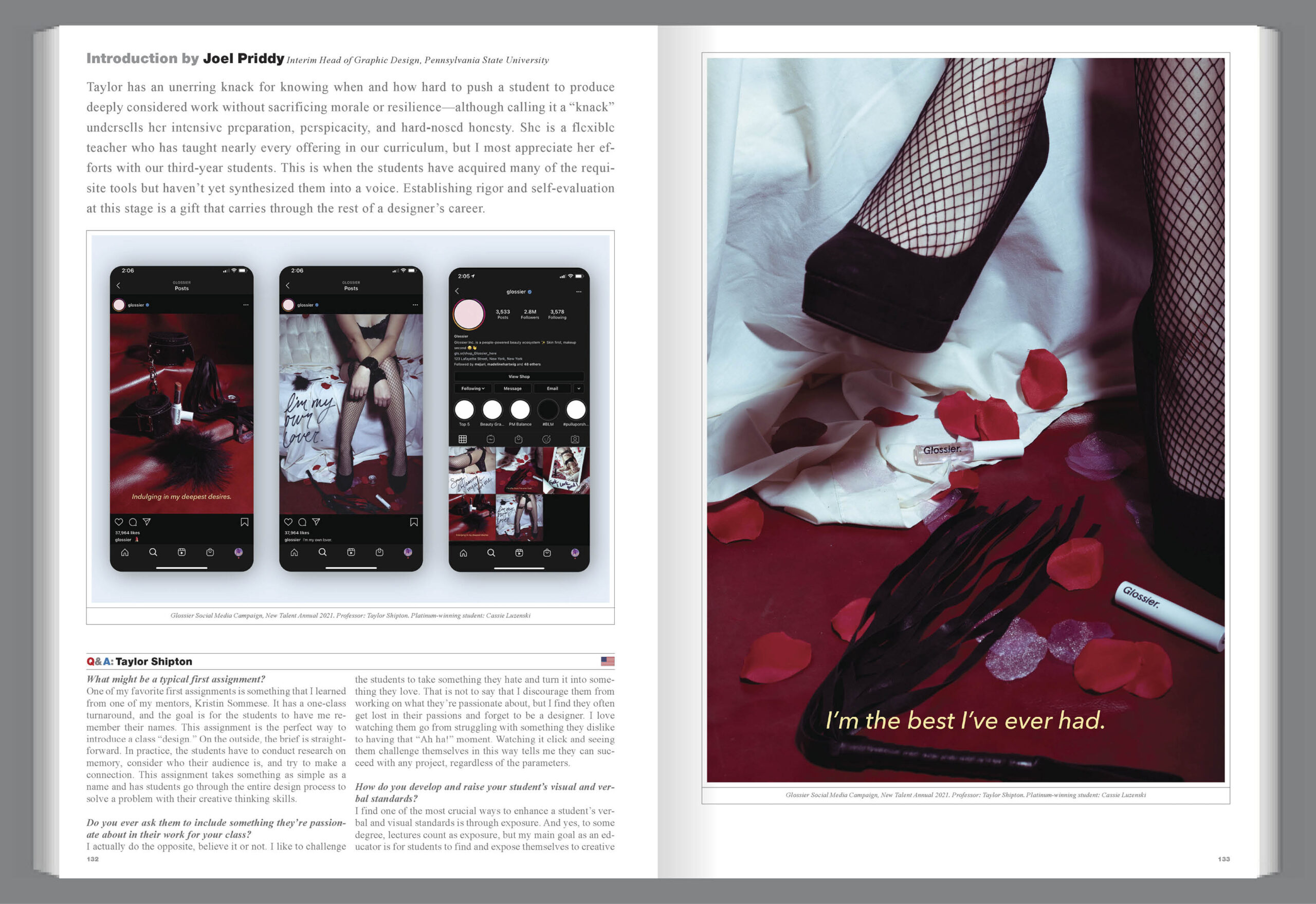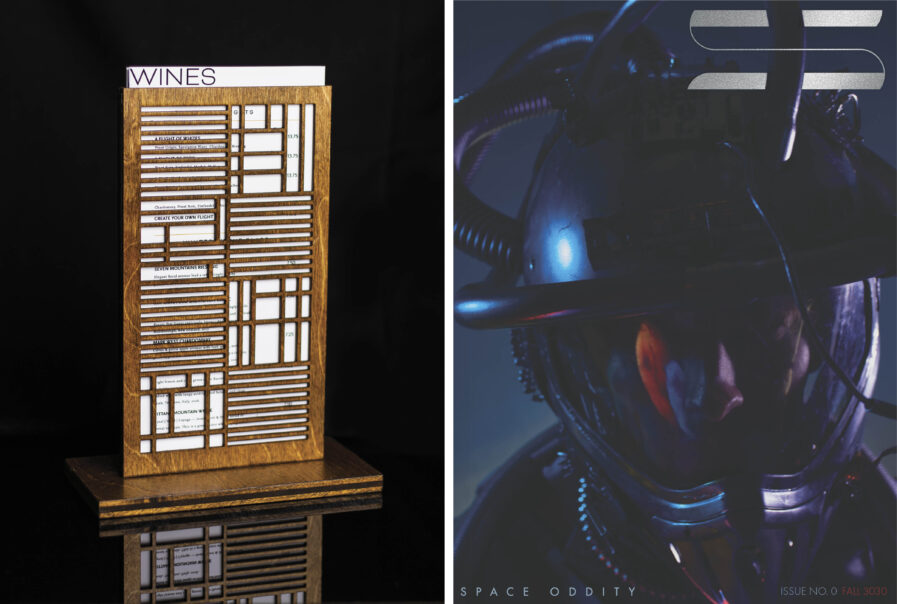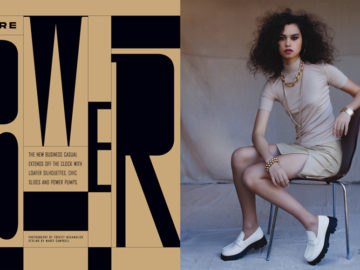In a recent Graphis Journal interview, readers gain insight into the innovative and impactful teaching philosophy of Taylor Shipton, an assistant professor in the Graphic Design department at Pennsylvania State University. The interview delves into Taylor’s unique approach to nurturing students’ creativity and fostering their growth as designers. With a focus on challenging students to push their boundaries, encouraging active participation, and emphasizing the value of experimentation, Taylor Shipton’s methods are reshaping the traditional classroom model, promoting a dynamic and empathetic approach to design education. Read more about her dedication to helping students develop into confident and skilled designers who embrace the power of innovation and excellence in their work.
Introduction by Joel Priddy, Interim Head of Graphic Design, Pennsylvania State University
Taylor has an unerring knack for knowing when and how hard to push a student to produce deeply considered work without sacrificing morale or resilience—although calling it a “knack” undersells her intensive preparation, perspicacity, and hard-nosed honesty. She is a flexible teacher who has taught nearly every offering in our curriculum, but I most appreciate her efforts with our third-year students. This is when the students have acquired many of the requisite tools but haven’t yet synthesized them into a voice. Establishing rigor and self-evaluation at this stage is a gift that carries through the rest of a designer’s career.

What might be a typical first assignment?
One of my favorite first assignments is something that I learned from one of my mentors, Kristin Sommese. It has a one-class turnaround, and the goal is for the students to have me remember their names. This assignment is the perfect way to introduce a class “design.” On the outside, the brief is straightforward. In practice, the students have to conduct research on memory, consider who their audience is, and try to make a connection. This assignment takes something as simple as a name and has students go through the entire design process to solve a problem with their creative thinking skills.
Do you ever ask them to include something they’re passionate about in their work for your class?
I actually do the opposite, believe it or not. I like to challenge the students to take something they hate and turn it into something they love. That is not to say that I discourage them from working on what they’re passionate about, but I find they often get lost in their passions and forget to be a designer. I love watching them go from struggling with something they dislike to having that “Ah ha!” moment. Watching it click and seeing them challenge themselves in this way tells me they can succeed with any project, regardless of the parameters.
How do you develop and raise your student’s visual and verbal standards?
I find one of the most crucial ways to enhance a student’s verbal and visual standards is through exposure. And yes, to some degree, lectures count as exposure, but my main goal as an educator is for students to find and expose themselves to creative thinkers, problem solvers, and designers that they relate to or enjoy their work. I want them to be able to dissect and critique the designs they love. I can lecture all day and tell the students what verbal and visual standards are, but I find that lecturing in this way is more likely to educate the students on my standards than allow them to develop their own.
What is your general approach to teaching?
My general approach to teaching is to treat my students like professionals in the field. In doing this, students grow accustomed to the expectations they will face upon graduating from our program. Students are expected to create high-level outcomes that are similar to the output of design studios. The skills students develop are more than design skills, too. Students practice talking and presenting their work, and also learn time management, overall planning, research, and development skills. Additionally, treating students like working adults allows them to grow their problem-solving skills and develops a very open and honest classroom environment.
What are the expectations set in your classroom?
One of my main expectations within my classroom is that students take an active role in their education. This can mean a lot of things, but overall, it encourages the students to recognize their outcomes and to care more about the work that they are producing. They start to see the value in the time they invest into any given project, rather than seeing a project “for a grade” and “just trying to get it done.” I see my students become unafraid to ask questions. I see them seeking critique and doing more research and processes to ensure they have the most compelling results. I see them discovering new and experimental ways to execute a project and communicate with an audience. When students have internships or graduate from our department, I want them to be unafraid to take initiative and be confident leaders. I don’t want them to be scared of asking the wrong question or being satisfied with easy solutions. What makes a good designer is someone passionate enough to make the work difficult, and I believe that taking an active role in their education helps them to do so.
Another expectation that I set for my students in my classroom is honesty. When you are constantly being judged in this school-based environment, it can be easy to want to find excuses for why things didn’t work out. It is an intimidating environment, and no one wants to feel like a failure. I want my students to know that I understand that, so I encourage everyone to be honest and to recognize that we are all human. I feel I can provide my students with better critiques when we’re all open and on the same page. If someone does not agree with a critique, we can break down why and often find a misunderstanding or a word was misinterpreted. To be honest, we are being respectful of each other’s time and desire to grow for the future. Nothing is wasted with beating around the bush, and we can get straight to the point of whether something works or doesn’t. I found that my relationships with my students are a lot stronger in doing so. We can show compassion while also telling each other, “This is the way it is; these are the expectations you will face when you graduate,” and I find that my students appreciate this as well.
What kind of advice do you give to the class?
A piece of advice I always give students is to not be afraid to take a risk. It can be extremely intimidating to want to try something different, especially in a school environment where you are being graded and assessed on everything you complete. To combat this, I put a lot of emphasis on frontloading a project and time management skills because I want my students to be unafraid to try something new that has not been done before. I let them know that not everything is going to work out, and that’s why we work so hard at the start of the project. There’s nothing wrong with throwing something out or starting over because there’s time.
One of my first lectures is about experimentation and breaking the standards that others have set. I convey to students that an easy solution is one that’s confirmed to work. You’ll get the reaction you expect, but not much more. A great solution is innovative. It will excite people to be new and different, and the work is more likely to be extremely successful.
How do you set up your classroom? Do you work with students individually or in groups? Do you have group critiques of the students’ work?
I often lecture at the start of class. I do this while everyone is awake and has some sugar or coffee flowing through their veins. I only ever lecture for 10 to 15 minutes. I want the students to absorb all of the information I provide for them, so I would rather give many short lectures than a few longer ones. Then, they are more likely to retain the information. I also have them apply the lectures immediately in that class period. This way, the students are not only hearing and writing down the information that I am presenting, but also executing it. This method seems to be the most effective at keeping their attention and interest and contributing to their learning outcomes. Students are less likely to have questions about lectures immediately following them and are more likely to develop their questions while implementing what they learned. This practice keeps me available for any questions to add clarity to the information the students are absorbing.
When it comes to critique, I like to mix things up to provide the students with a variety of ways to learn. Not everyone learns in the same manner, and everyone has different preferences. If the project is on an individual basis, then I set up the schedule to critique students individually and in rotating groups. This provides students with a very focused critique during one-on-ones and in groups; it exposes them to the solutions and design choices of their classmates. In group critiques, I’ll trade off between me initiating the critique and having students critique each other before I follow through with comments. I want them to be comfortable talking to each other outside of class, and I want them to realize that they are intelligent and provide good feedback to each other. The students are valuable resources to each other and can use their classmates as such! A lot of design is collaborative, so I find building their relationships to be extremely important inside and outside the classroom.
Taylor Shipton is an assistant teaching professor in the graphic design department at Penn State. She has been teaching at Penn State since 2019, leading a variety of courses with focuses on communication and human-centered design, design photography, experience design, and typography. Taylor has a background in experiential design and design photography. Her personal work focuses on human-centered design, with explorations in both analog and digital design environments. Taylor brings her personal experiences in the industry into the classroom, striving to innovate the historical classroom model into one that exploits experimentation and empathy.
Social: LinkedIn






